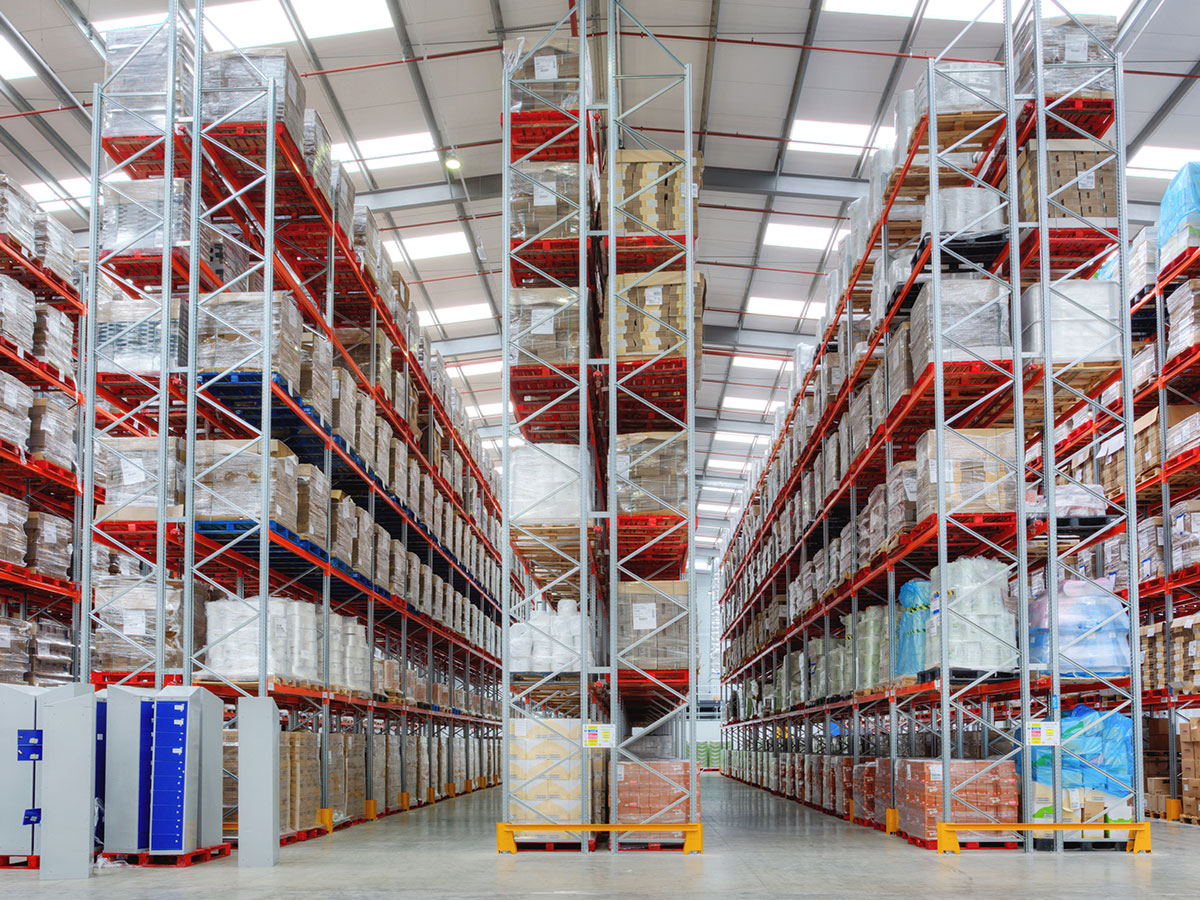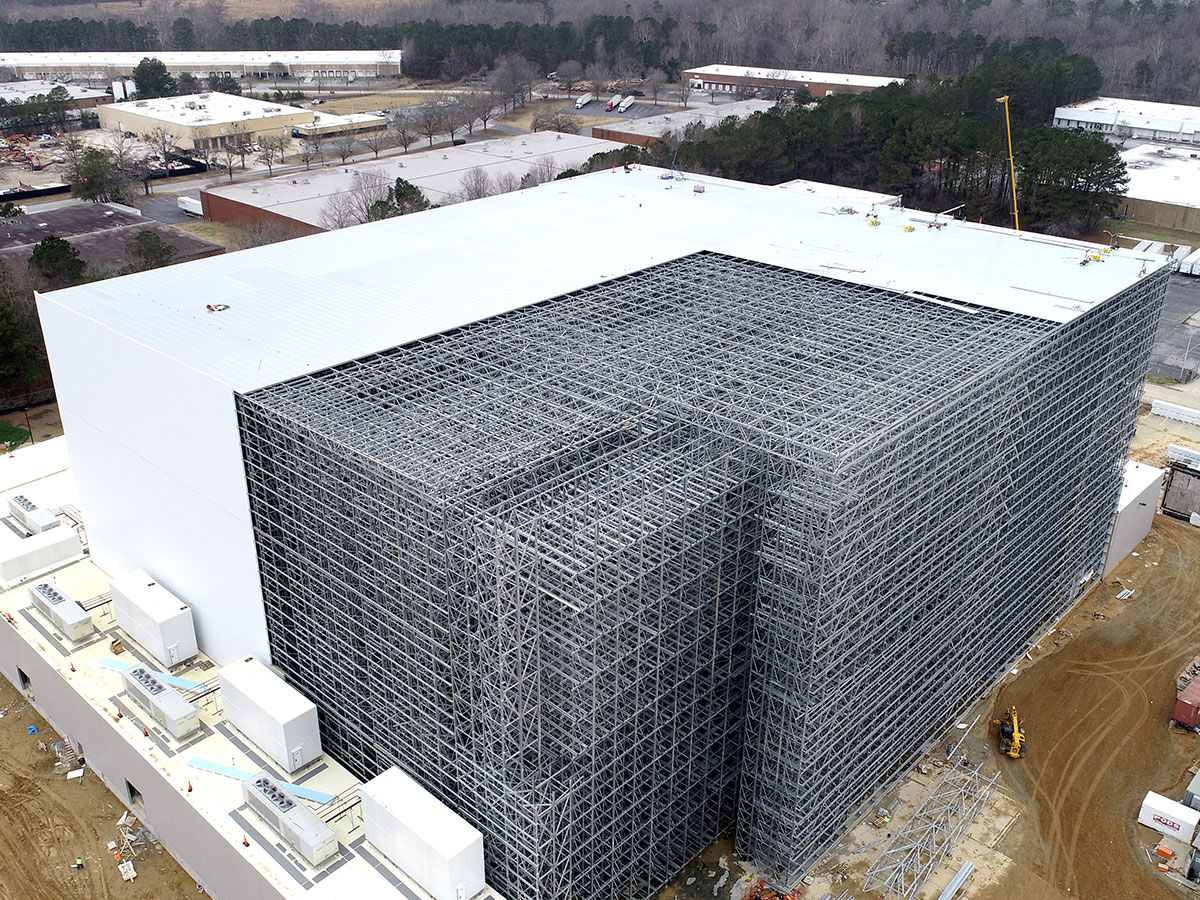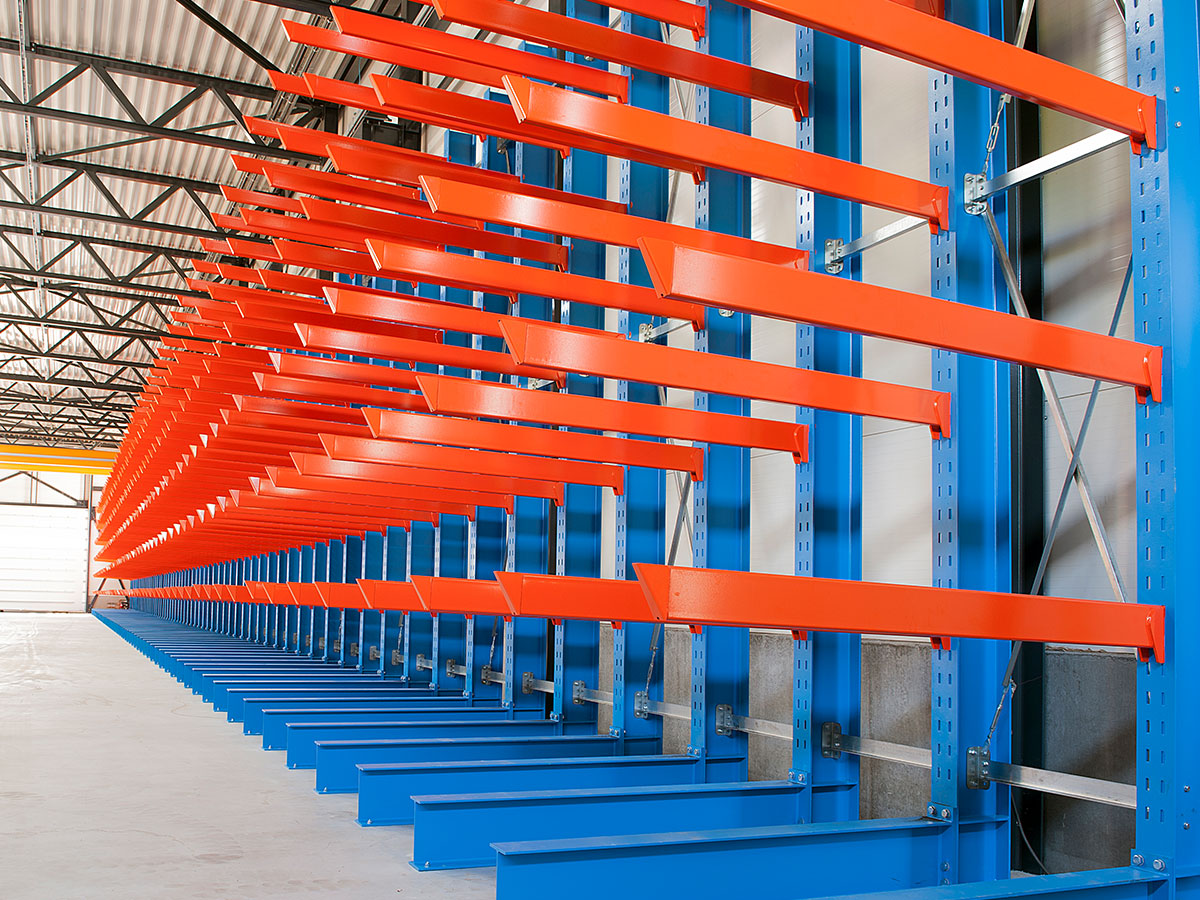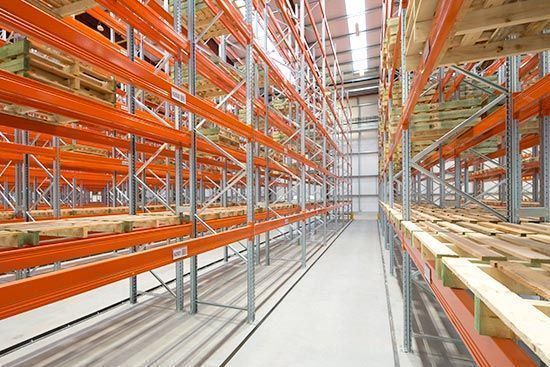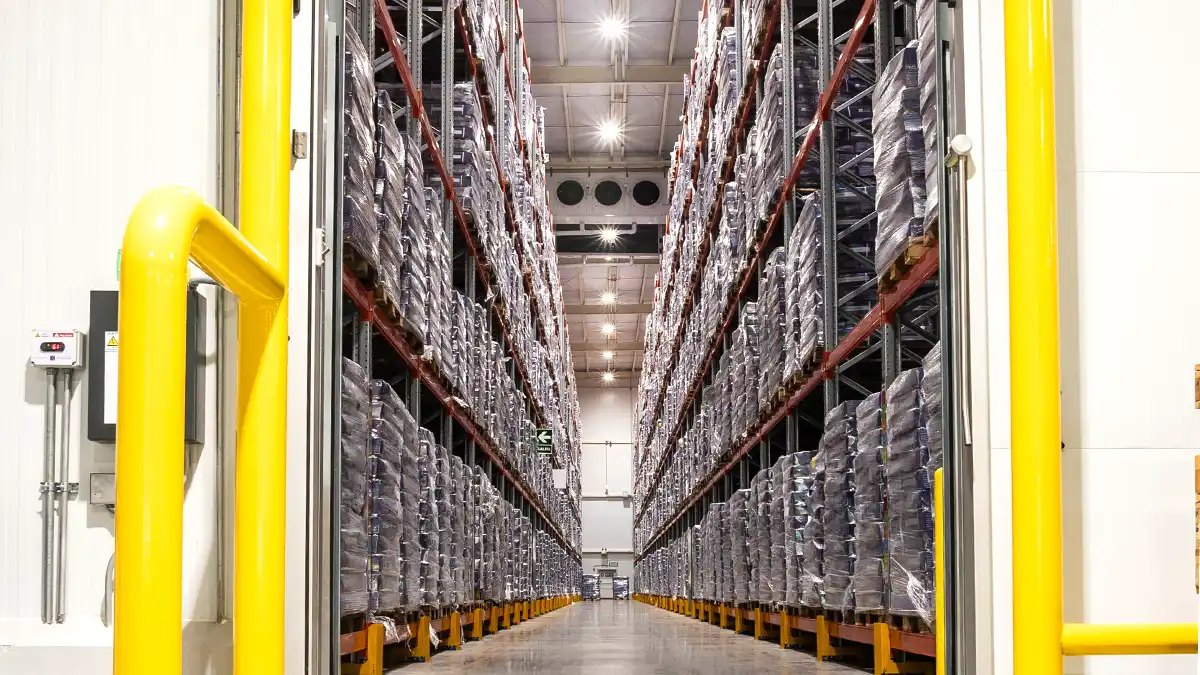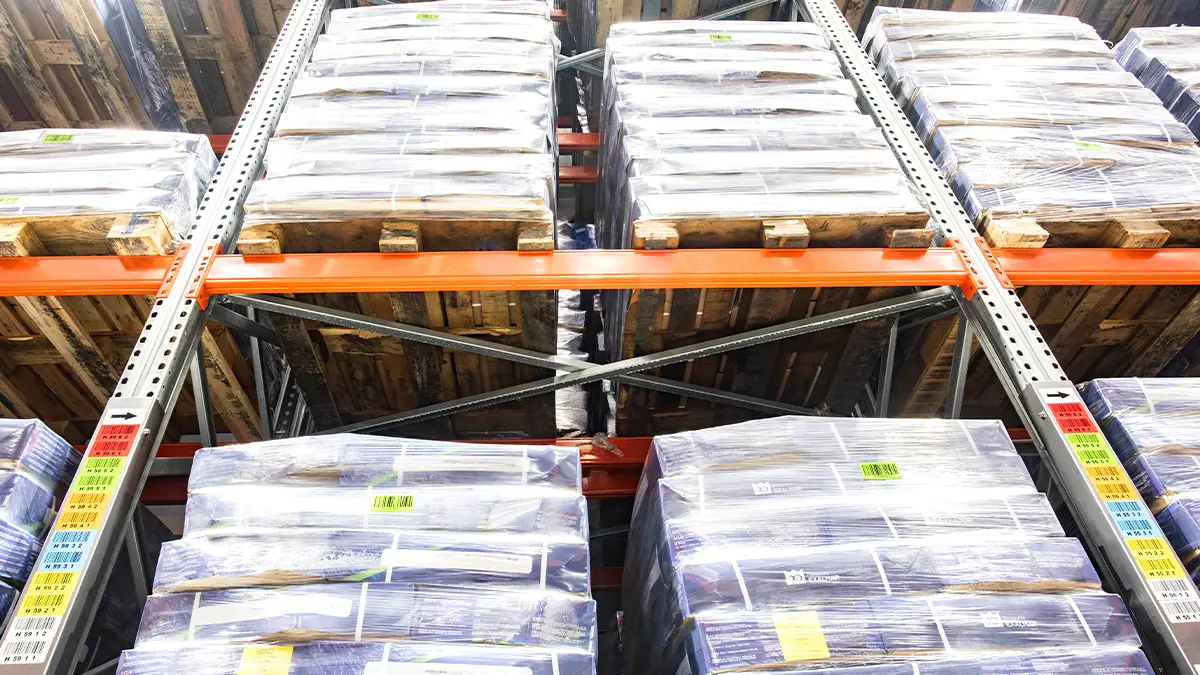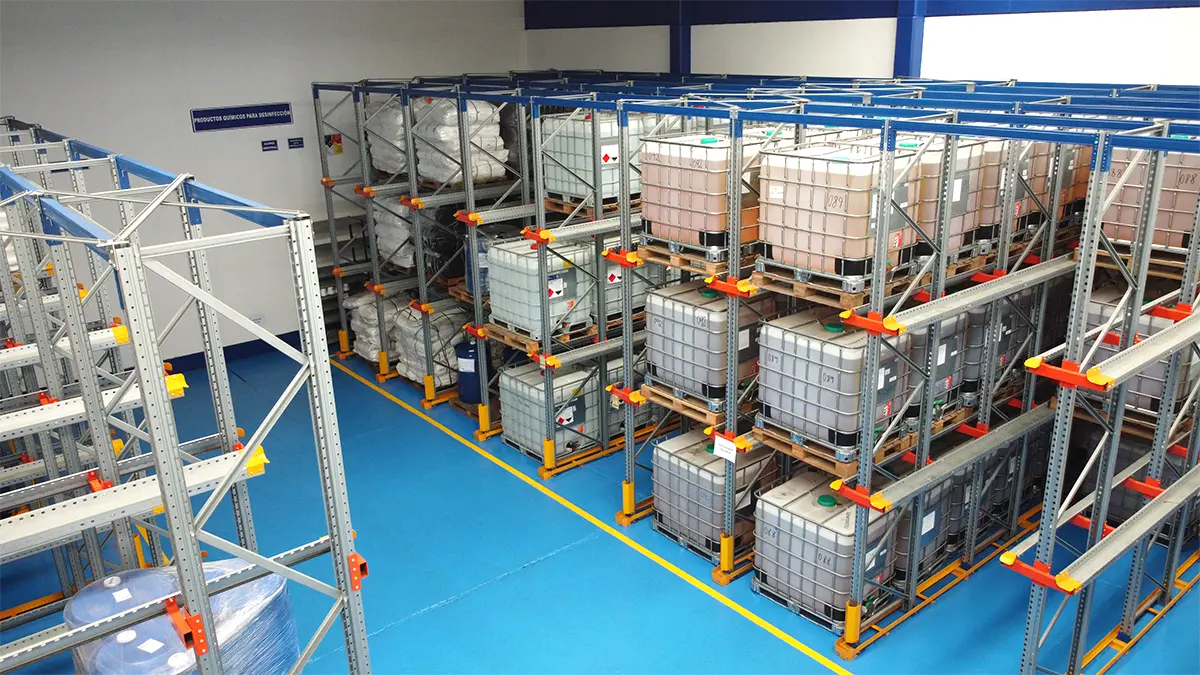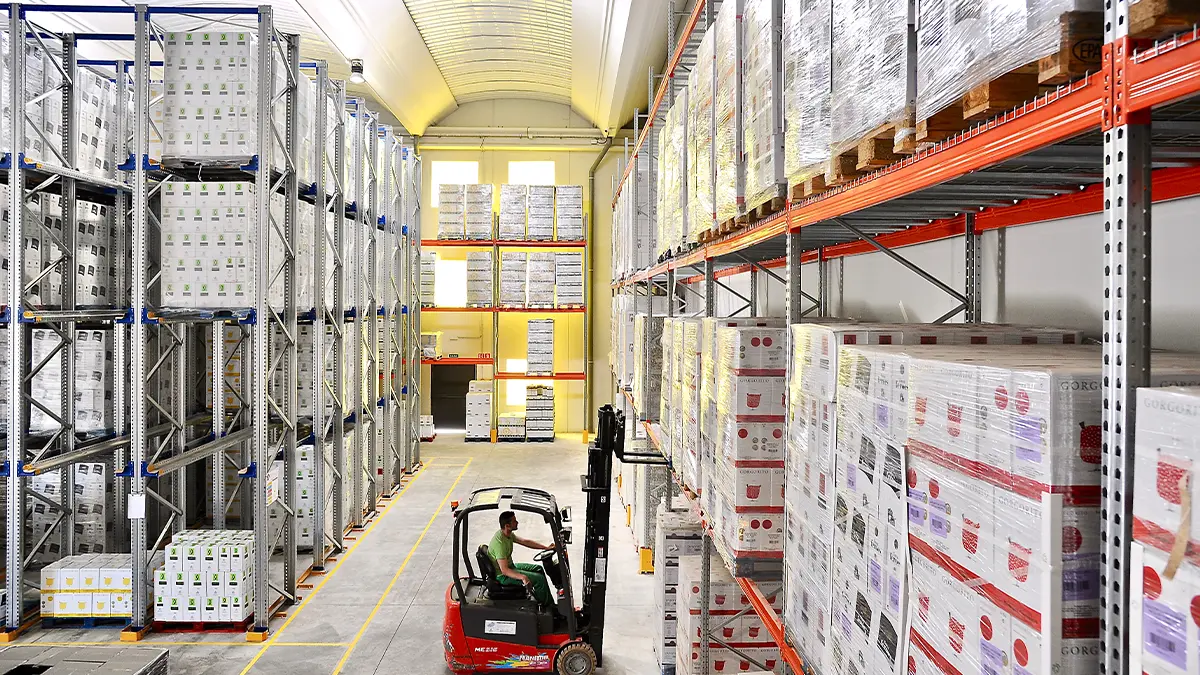Designing a cold storage warehouse is a crucial task to ensure the preservation of perishable products such as food and medicines. These warehouses must maintain specific temperature and humidity conditions to preserve quality and extend the shelf life of products. This article will cover the fundamental aspects of designing a cold storage warehouse, including design steps, relevant regulations, and other important factors.
What is a cold storage warehouse?
A cold storage warehouse is a facility specialized in storing products at controlled temperatures, generally below 0°C. These warehouses are key in the supply chain of perishable products, as they help maintain the quality and safety of products during storage and distribution.
Key points in designing a cold storage warehouse
Below are the key points to consider when designing a cold storage warehouse.
- Location:
The location of the warehouse is a critical factor for its operational efficiency. It should be strategically located near transportation routes and key markets to reduce delivery times and transportation costs. Therefore, the site selection should be carefully considered.
- Size and Capacity:
It is essential to determine the size and capacity of the warehouse to meet current and future needs. This involves assessing the volume of products to be stored and anticipating possible expansions. Mainly, it should be ensured that the space is sufficient for the intended operations.
- Thermal Insulation:
Thermal insulation is crucial to maintain a constant internal temperature and reduce energy consumption. It is recommended to use materials that meet the highest quality standards for wall, roof, and floor insulation. Good insulation can achieve significant energy savings.
- Refrigeration Systems:
Selecting efficient and reliable refrigeration systems is vital for the warehouse's operation. Options such as vapor compression refrigeration or absorption refrigeration systems that ensure continuous operation should be considered.
- Temperature and Humidity Control:
Maintaining optimal temperature and humidity conditions within the warehouse is essential for product preservation. Implementing monitoring and control systems helps ensure these conditions. Therefore, high-precision equipment should be installed.
- Storage Design:
A well-planned internal design maximizes space and facilitates product access. Mainly, efficiency in the use of available space should be sought.
- Safety and Regulations:
Compliance with all safety and health regulations is indispensable. This includes installing fire detection systems, alarms, and emergency exits to ensure the safety of workers and products. Thanks to these measures, a safe working environment can be ensured.
Steps in designing a cold Storage warehouse
The design process of a cold storage warehouse includes several essential steps described below.
Needs Analysis:
The first step in designing a cold storage warehouse is to assess specific storage needs. It is important to consider the type of products, volume, and temperature and humidity requirements. Therefore, a detailed needs analysis should be conducted.
Site Selection:
Choosing a suitable location is crucial for the warehouse's success. Factors such as accessibility, proximity to suppliers and customers, and availability of public services should be considered. Mainly, it should be ensured that the chosen site meets all operational requirements.
Architectural Design:
Creating an architectural design that optimizes space use and facilitates product flow is essential. This includes the arrangement of racks, loading and unloading areas, and work zones. A good design can improve operational efficiency.
Refrigeration Engineering:
Designing the refrigeration system is a critical step. Selecting equipment and technologies that ensure energy efficiency and reliability is fundamental for the warehouse's operation. Therefore, high-quality and efficient systems should be chosen.
Insulation and Construction:
Choosing construction materials with high thermal insulation capacity and moisture resistance is vital. Supervising the construction to ensure quality standards are met is equally important. Mainly, it should be ensured that the construction is carried out according to specifications.
Control Systems Installation:
Implementing monitoring and control systems to manage critical parameters is essential for the warehouse's operation. These systems can maintain precise control of internal conditions.
Testing and Validation:
Conducting thorough tests to ensure the warehouse meets design requirements and regulations is crucial. Adjusting systems as necessary ensures optimal operation. Therefore, tests should be conducted before full operation.
Operation and Maintenance:
Establishing operational and maintenance procedures is fundamental to ensure the continuous and efficient operation of the warehouse. This includes staff training and implementing preventive maintenance routines. Mainly, it should be ensured that the staff is well-trained.
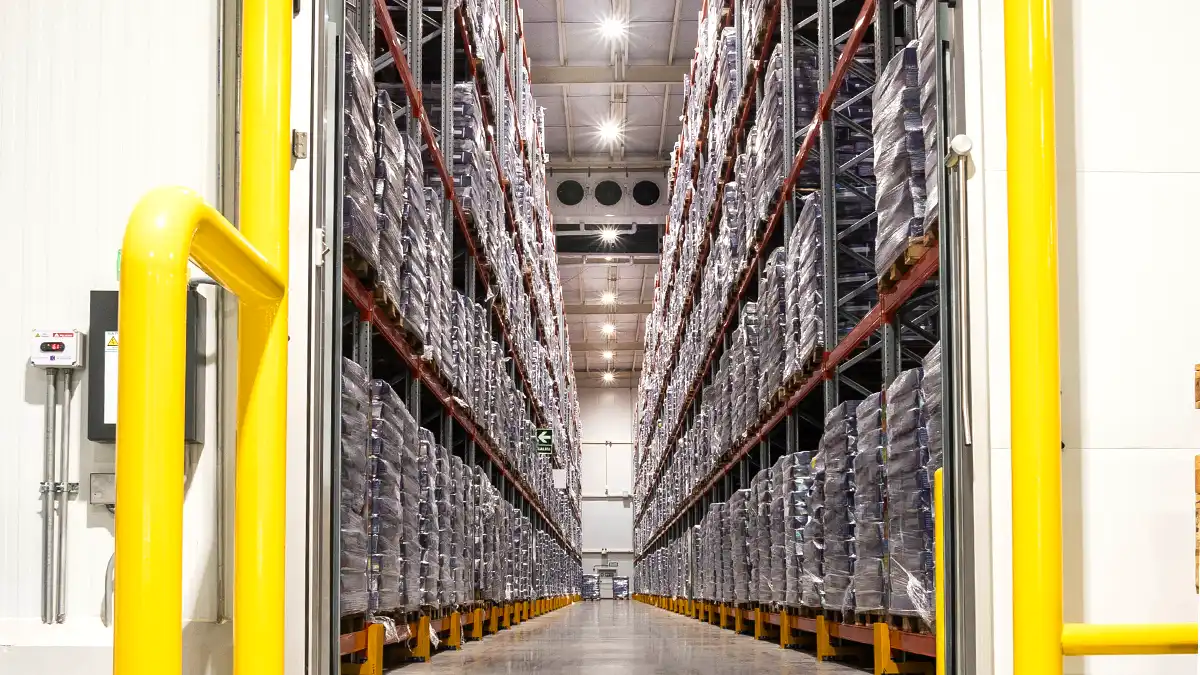
Suitable storage systems for a cold storage warehouse
Storage systems for cold storage rooms have specific characteristics that differentiate them from other projects. Depending on the requirements, one type of metal rack may be more suitable than another, or even different combinations may be used to achieve an optimal result.
Below are the industrial racking systems that best adapt to cold storage or freezing conditions:
Adjustable Pallet Racking:
The adjustable pallet racking storage solution offers direct and immediate access, ideal for high-turnover products and different references; this system is versatile and adaptable to different height, width, and length measurements.
Drive-In Racking:
Drive-in racking is a high-density industrial storage system that achieves greater compaction of the racking; with only one access aisle, it maximizes the available space and height for loading and unloading.
Live Storage Systems:
The live storage system uses rollers to facilitate load movement, optimizing product flow and reducing handling time. Among them are:
Push-Back Racking (LIFO):
Especially efficient with the LIFO system, these allow storing several pallets in depth, using a system of carts that move backward as new pallets are added.
Live Pallet Racking (FIFO):
Especially efficient with the FIFO system, these allow storing several pallets in depth, ensuring that the first products in are the first out, ideal for perishable goods.
Mobile Pallet Racking:
The mobile pallet racking allows high-density storage and optimizes available space by moving the racks on rails, eliminating individual access aisles and working automatically through electric motors.
Pallet Shuttle System:
The industrial racking with AR Shuttle is a semi-automated solution that efficiently moves the load, ideal for maximizing storage capacity. This system allows automatic inventory control, as well as loading and unloading in FIFO or LIFO mode in freezing chambers with temperatures down to -30°C.
Automated Solutions:
There are also automated systems that adapt to temperature conditions for cold storage warehouses, divided into:
Clad Rack Warehouses:
Forming part of the building structure, it is ideal for large volumes and heights, allowing efficient storage adapted to temperature conditions throughout the chamber.
AS/RS Systems for Pallets:
Includes stacker cranes that improve efficiency and inventory control. The system consists of AS/RS machines (satellite carts) controlled by management software.
Mini-load Automated System:
With a high-density system and robotic equipment, it is ideal for cold storage, due to the reduction of work aisles and space utilization.
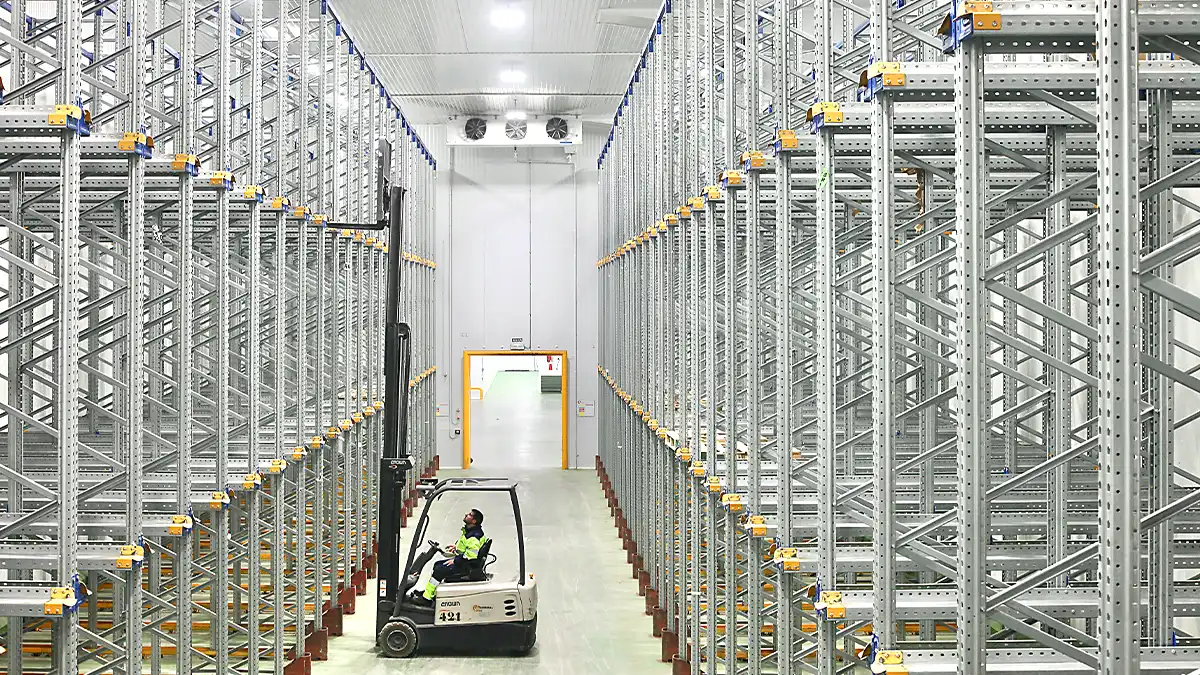
Regulations and standards for cold storage warehouses
Compliance with regulations and standards is essential for the safe and efficient operation of a cold storage warehouse. Below are some of the most important regulations.
Food Safety Regulations:
Compliance with local and international food safety regulations is essential to ensure the quality and safety of stored products. Regulations such as those established by EFSA in Europe or FDA in the United States are key examples.
Occupational Safety and Health Regulations:
Ensuring that the warehouse design and operation comply with occupational safety and health regulations is crucial to protect workers.
Environmental Regulations:
Implementing sustainable practices and complying with environmental regulations helps minimize the warehouse's ecological impact. This includes waste management and efficient energy use. These practices contribute to environmental sustainability.
Quality Certifications:
Obtaining quality certifications such as ISO 9001 and ISO 22000 ensures operational excellence and customer trust. These certifications demonstrate the warehouse's commitment to quality and food safety. Therefore, these certifications should be sought.
Cold storage warehouse and supply chain management
Supply chain management is an essential aspect of operating a cold storage warehouse. This management involves coordinating and optimizing all activities related to the flow and storage of products, from the point of origin to the point of consumption. Mainly, it should be ensured that products are kept in optimal conditions throughout the logistics process.
Systems Integration:
It is crucial to integrate warehouse management systems with those of suppliers and customers. This allows complete visibility of the supply chain and facilitates informed decision-making.
Inventory Optimization:
Maintaining adequate inventory levels is fundamental to avoid both excess and shortage of products. Good inventory management can reduce costs and improve operational efficiency.
Transportation and Logistics:
Coordinating transportation and supply logistics is vital to ensure that products reach their destination in optimal conditions. Therefore, logistics service providers should be carefully selected, and clear agreements established.
Technology and Automation:
Implementing advanced technologies and automation systems can significantly improve supply chain efficiency. Mainly, technological solutions that allow precise tracking and control of products should be considered.
Conclusion
Designing an efficient and compliant cold storage warehouse is a complex process that requires meticulous planning and precise execution. By considering all key aspects, from location and size to refrigeration systems and regulations, a facility can be created that not only preserves product quality but also impacts operational costs and ensures worker safety.
At AR Racking, we have extensive experience in implementing temperature-controlled storage projects. Contact us for personalized advice and support for your company.




